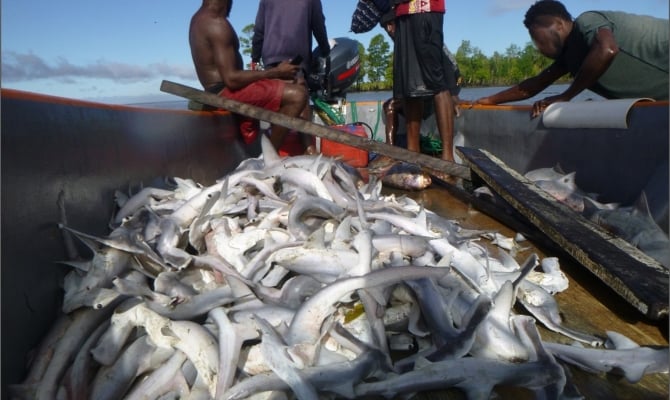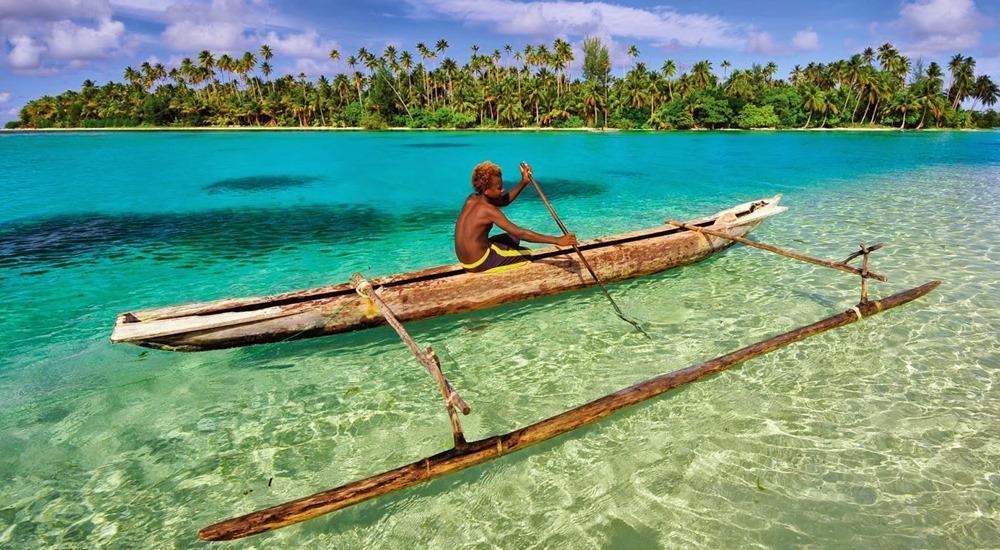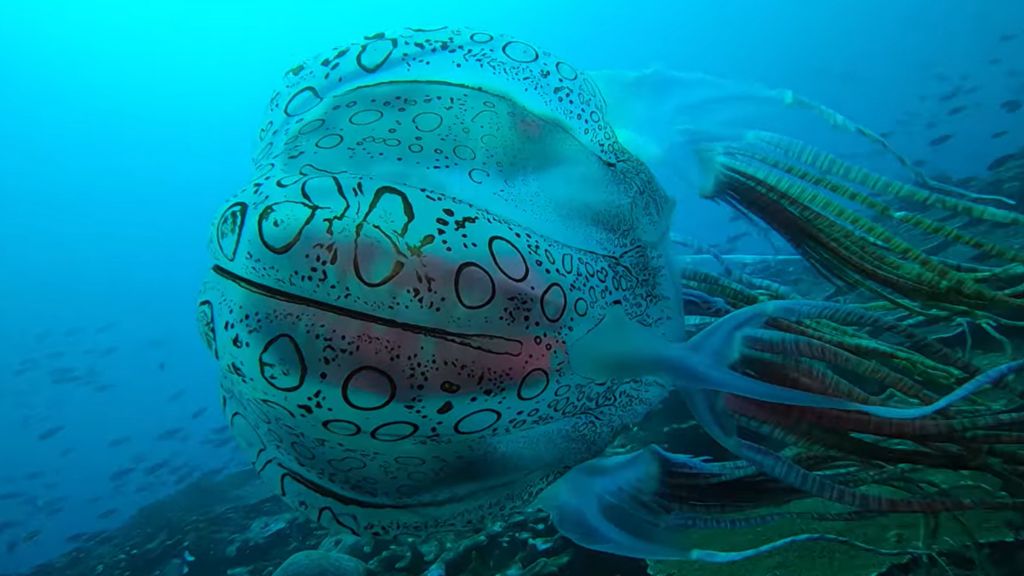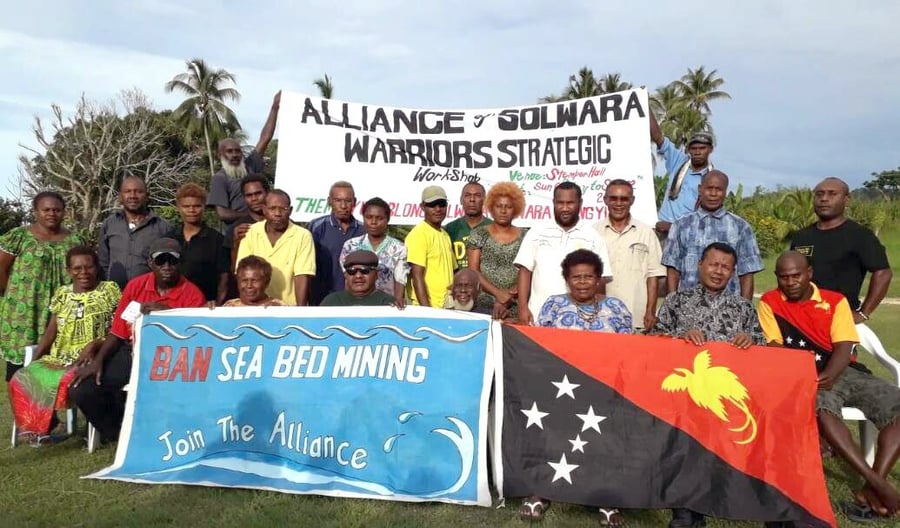The growing demand for swim bladders in the PNG fishing community has led to ‘by-catch’ that threatens the shark and dolphin species
In the last decade, fishers in lower riverine and inshore communities of the Kikori Delta in Papua New Guinea have begun targeting fish species for their swim bladders rather than meat. The swim bladder is a fibrous organ that fish use for buoyancy and communication. Swim bladders have various uses in East Asia, including use in traditional Chinese medicines, as a food product, and in various beauty products. There is a growing demand for swim bladders, which are traded by their product name ‘fish maw’. The value of fish maw has increased considerably over the last decade, and this has led to ‘fish maw fisheries’ in many regions worldwide.
In the Gulf and Western Provinces of Papua New Guinea, fish maw is one of the primary fisheries products. Fishers in coastal areas near river outflows target species such as barramundi (Lates calarifer) and jewel fish (Nibea squamosa), which have high value maw. This led to an increase in the number of gillnets being used in these lower riverine and coastal habitats. Gillnets are quite effective fishing gear, and this means that species other than those being targeted are often caught accidentally (these are known as ‘by-catch species’). The issue for fishers in the Gulf and Western Provinces is that the gillnets intended for the fish maw fisheries are also trapping many sharks, rays and dolphins. There are growing concerns that these by-catch species are declining throughout the region, and that management is needed to ensure healthy populations remain into the future.
In response to these growing concerns, from October 2021 to April 2022, the Piku Biodiversity Network (PBN) in Papua New Guinea conducted a project in collaboration with James Cook University to document the catch rates of different species being caught in the fish maw fishery in the Kikori River Delta, Gulf Province. Local fishers were also interviewed to understand how they use and value dolphins, and whether they have noticed changes in the dolphin population over time. This project was supported by the Secretariat of the Pacific Regional Environmental Programme (SPREP), through the By-catch and Integrated Ecosystem Management (BIEM) Initiative of the Pacific-European Union Marine Partnership (PEUMP) Programme funded by the European Union and the Government of Sweden. The project aimed to provide information to fisheries managers about the relative catch rates of different species. This will allow managers to track population changes in catch rates into the future.
To collect data on species, catch rates, PBN engaged local fishing communities to assist in data collection (Image 1). Five groups of fishers were provided with data sheets and a species identification guide and instructed to record what they caught each time they fished, and how long they had spent fishing. The fishers collected this data over a five-month period.
It was found that the fishers’ target species of jewel fish and barramundi made up 22 per cent of the catch from observed fishing effort (Image 2). King threadfin salmon Polydactylus macrochir, a species with high-quality meat, made up 13 per cent of the catch.
By-catch of endangered and threatened sharks and rays
The concern, however, was that 49 per cent of the catch included species of sharks and rays. The most frequently caught species was the winghead shark Eusphyra blochii (20 per cent), which is listed as Endangered on the International Union for the Conservation of Nature Red List of Threatened Species (IUCN Red List). Other threatened species that were observed included two species of river shark, two species of sawfish, and wedge fish.
The issues with fishery interactions with threatened shark and ray species were highlighted by one of the communities monitoring catch shark and ray interactions exclusively. This community caught 1,112 sharks and rays between November 2021 and February 2022. The winghead shark (Endangered) constituted 77.5 per cent of the catch, and in total, 97 per cent of the sharks and rays caught are species threatened with extinction (listed as either Critically Endangered, Endangered, or Vulnerable on the IUCN Red List). (Image 3). When sharks and rays are caught, they are retained for the value of their fins, while meat is sometimes consumed or sold. An issue in remote areas of the Gulf of Papua, is that sharks and rays are caught more frequently than the demand for their meat for local consumption. These remote communities do not have access to refrigeration, so surplus catches are usually only retained for their fins (which can be dried), with their meat being discarded.
Dolphin entanglement
As well as the fishery observations, interviews with local fishers about dolphins provided useful information for consideration in their management. Local communities have cultural connections with dolphins. For example, the Australian snubfin dolphin Orcaella heinsohni, locally called Pidu, has legends that relate it back to its human ancestry. In one tribal legend:
“The first dolphin was a man who turned into a dolphin…This man killed his mother to wear her skin to dance at the village party, acting as a female. People at the party found out that this man was not actually a woman. He was ashamed and jumped into the water and became Pidu. Pidu came from a man and a man was Pidu. We remember this story”.
No fishers in the Kikori region consume dolphin meat, nor have any other use or value for dolphin products beyond cultural and spiritual connections. However, dolphins are routinely entangled in gillnets. Because dolphins need to surface to breathe, they often drown in fishing nets. This is leading to high mortalities of dolphin species, and there are concerns that populations may become locally extinct if ways to mitigate dolphin interactions with fishing gear are not implemented. This is a topic of ongoing research for PBN.
The fish maw fishery presents a complex set of challenges for managers. There is a need to balance fisher livelihoods and economic opportunities with sustainability goals for target species and threatened sharks, rays and dolphins that are caught incidentally. The present project has provided baseline information on the relative catch rates of species in the fish maw fishery, and it will be important to monitor any changes in the future to ensure that catch levels are sustainable and not depleting populations. Future work of the PBN aims to understand the social dimensions of fish maw fisheries, to ensure that future management initiatives are fair and equitable across the different tribal groups who rely on natural resources in the region.
This story was originally published at SPREP on 23 February 2023, reposted via PACNEWS.




